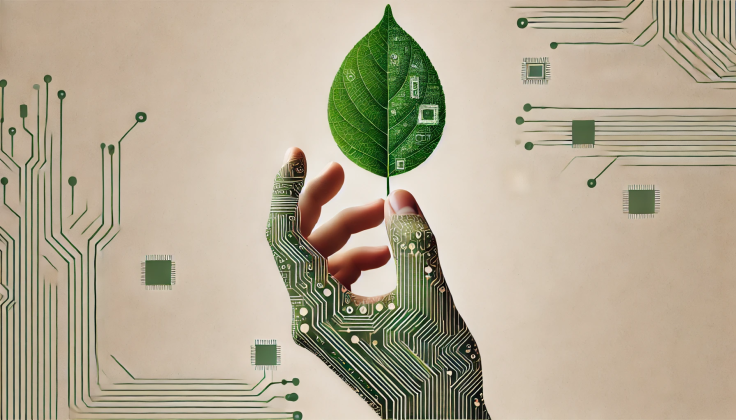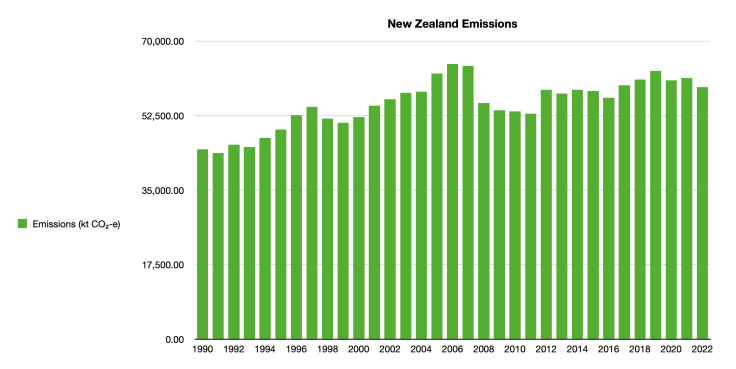Building a Greener Future: How Sustainable Software Engineering Reduces Tech's Climate Impact
Sophia Willows stands as a prominent advocate for greener engineering practices

The need for sustainable software practices is more urgent than ever, as digital transformation brings a growing ecological footprint. As the tech industry expands, the call for greener engineering practices is becoming increasingly important, and many industry experts are advocating for more environmentally conscious methodologies.
Amidst this crucial dialogue, Sophia Willows emerges as a prominent advocate for greener engineering practices. Sophia, a seasoned software leader in New Zealand, dedicates her career to promoting sustainable approaches. Speaking on podcasts like The Core, her influence stretches beyond her projects, positioning her as essential in the movement toward eco-friendly software. Her commitment resonates in her call for industry-wide awareness and adopting eco-conscious methodologies to mitigate adverse environmental impacts.
Cutting Carbon In Code
Reducing software's carbon footprint begins with consistent measurement of its state and progress. As Sophia emphasises, "You can't fix what you don't measure," highlighting the need for tracking to pinpoint areas for improvement. By right-sizing databases and servers, engineers can avoid over-provisioning, curtail unnecessary carbon emissions, and cut operational costs.
Utilising cloud elasticity is another impactful strategy.
For instance, scaling downstaging or QA environments during off-peak hours can significantly reduce infrastructure waste. Computational efficiency is also essential; as Sophia mentions, "Applying the right data structure or algorithm for the problem you're solving can save many CPU cycles," lowering energy consumption directly. These practices collectively form the cornerstone of developing more sustainable software solutions.
Measuring Software's Green Impact
To effectively track software's environmental impact, engineering teams should utilise cloud provider tools that offer insights into their carbon footprint. For example, Amazon's Customer Carbon Footprint Tool provides detailed emissions tracking at the project or subaccount level, serving as a reliable "north star metric." As Sophia points out, "the lower this is per user you serve, the better," indicating that reducing emissions per user is a crucial benchmark for eco-friendliness.
Another helpful metric is the number of CPU cores used per user, which acts as a proxy for energy consumption. For example, companies like Uber saved significant power by optimising their Golang garbage collector, reducing usage by 70,000 CPU cores. It's also essential to normalise values to understand how the carbon footprint changes over time, ensuring that emissions per user don't escalate disproportionately as the system grows. Maintaining efficiency and eco-friendliness should be a priority as the software scales, avoiding architectural choices that could lead to inefficiencies.
Boosting Code Efficiency
Boosting code efficiency is an essential practice that aligns closely with enhancing software performance and reducing energy consumption. As Sophia explains, "It's not a one-or-the-other situation. " Improvements in performance often lead to decreased hardware demands, which in turn lowers the overall energy footprint. By implementing more efficient data structures and algorithms, engineers can significantly reduce the workload processed by CPUs, directly reducing energy consumption and environmental impact.

A compelling example of this efficiency in action is the upgrade from PHP 5 to PHP 7 in 2015, which dramatically enhanced the language's performance. If every website were to transition to PHP 7, it would lead to an estimated reduction of 7.5 billion kilograms of CO2 per year, equivalent to about 10% of New Zealand's total emissions in 2018. This illustrates the substantial environmental benefits of optimised code, making it a critical focus for sustainable software development.
Eco-Friendly Software Design
Designing environmentally conscious software systems requires prioritising simplicity. By removing unnecessary infrastructure components, teams can significantly reduce the system's carbon footprint while making it easier to maintain and understand, boosting overall productivity. As Sophia shares, "a lot of real-world architectures contain unnecessary infrastructure components, and these have climate costs," making simplification a critical step in creating sustainable software.
Choosing an eco-friendly tech stack is another critical consideration. Some programming languages are more energy-efficient than others; for example, research suggests that Golang is less carbon-intensive than Python. Additionally, managing background jobs with energy consumption patterns in mind can further enhance sustainability. For instance, mimicking Apple's Clean Energy Charging feature by scheduling asynchronous tasks when the grid is primarily powered by renewables can reduce energy waste. This approach ensures that software systems maintain effectiveness while aligning with sustainable practices.
Cloud's Green Advantage
Cloud computing has the potential to significantly reduce carbon emissions, as many providers are actively working to enhance energy efficiency in their data centres. "Modern compute sleds plug straight into a busbar for power delivery to minimise power conversion losses," notes Sophia, making cloud infrastructure much more efficient than what most individuals or smaller organisations could achieve on their own.
However, maximising the cloud's green benefits requires careful resource management. While the elasticity of cloud services makes it easy to scale compute resources up or down, this flexibility can lead to over-provisioning and wasted capacity if not appropriately monitored. A 2022 study by CAST AI found that 37% of provisioned compute capacity in public clouds often needs to be used. To leverage the cloud's potential for reducing emissions, teams should regularly assess and adjust their usage, ensuring they scale resources efficiently to avoid unnecessary energy consumption. This approach helps organisations reduce their carbon footprint while maximising the cloud's efficiencies.
Teaching Green Tech Skills
Incorporating environmental responsibility into software engineering education is essential for developing a generation of eco-conscious developers. As Sophia suggests, "Topics like energy-efficient algorithms, eco-friendly design patterns, and sustainable cloud computing are all increasingly important and would naturally slot into existing computer science curricula," ensuring that students gain practical skills relevant to today's tech landscape.
Beyond academia, industry professionals like Sophia play a crucial role in promoting green engineering practices. Collaborations between universities and the tech industry can facilitate the introduction of sustainability-focused internships, funding, and real-world projects. This partnership helps nurture future engineers who prioritise eco-friendly solutions. Moreover, hackathons and competitions with an environmental theme can effectively engage students, providing hands-on experience in sustainable software practices and raising early awareness of the importance of sustainability in technology. This combined approach between academia and industry is key to building a workforce prioritising green tech solutions.
Collaborating For Sustainability
Collaboration among engineers, product managers, designers, and other stakeholders is crucial for developing effective green software solutions. According to Sophia, "green software tends to be cheaper to operate," making this an ideal time to incorporate sustainability into project roadmaps. Engaging in discussions about green practices from the early stages of development is vital, as it's "far easier to design with green engineering principles in mind" than to retrofit sustainability into existing projects.
Sophia suggests that stakeholders should work together to set clear environmental impact goals. Product managers can help define features and metrics to track energy usage, while designers can implement energy-efficient interface elements. Even minor adjustments, such as using a darker shade of grey in a dark mode interface, can contribute to energy conservation. By initiating these conversations early, teams can address the knowledge gap around the climate impact of software and integrate sustainable practices more effectively.
Innovations In Green Software
One of the most promising technologies for enhancing sustainability in software engineering is the Green Software Foundation's Carbon-Aware SDK. As Sophia describes it, "This tool enables your application to understand when it is more efficient to do work. " The SDK provides current and forecasted carbon emissions data for various locations worldwide, allowing developers to adjust processes to run at times or in regions where energy consumption is more sustainable.
Integration with this technology is straightforward, as it works with any HTTP client, and the Green Software Foundation offers a ready-made client library compatible with popular programming languages. Sophia highlights that this tool has been particularly effective in "minimising the climate impact of long-running background jobs," making it an accessible and practical solution for developers aiming to reduce their software's carbon footprint.
Ultimately, integrating sustainability into software engineering practices is not just an environmental responsibility but also an economically viable approach. By embedding sustainability into tech education, leveraging emerging technologies, and collaborating with stakeholders, the software industry can make significant strides towards reducing its carbon footprint and aligning technology with the planet's needs.
© Copyright IBTimes 2025. All rights reserved.





















